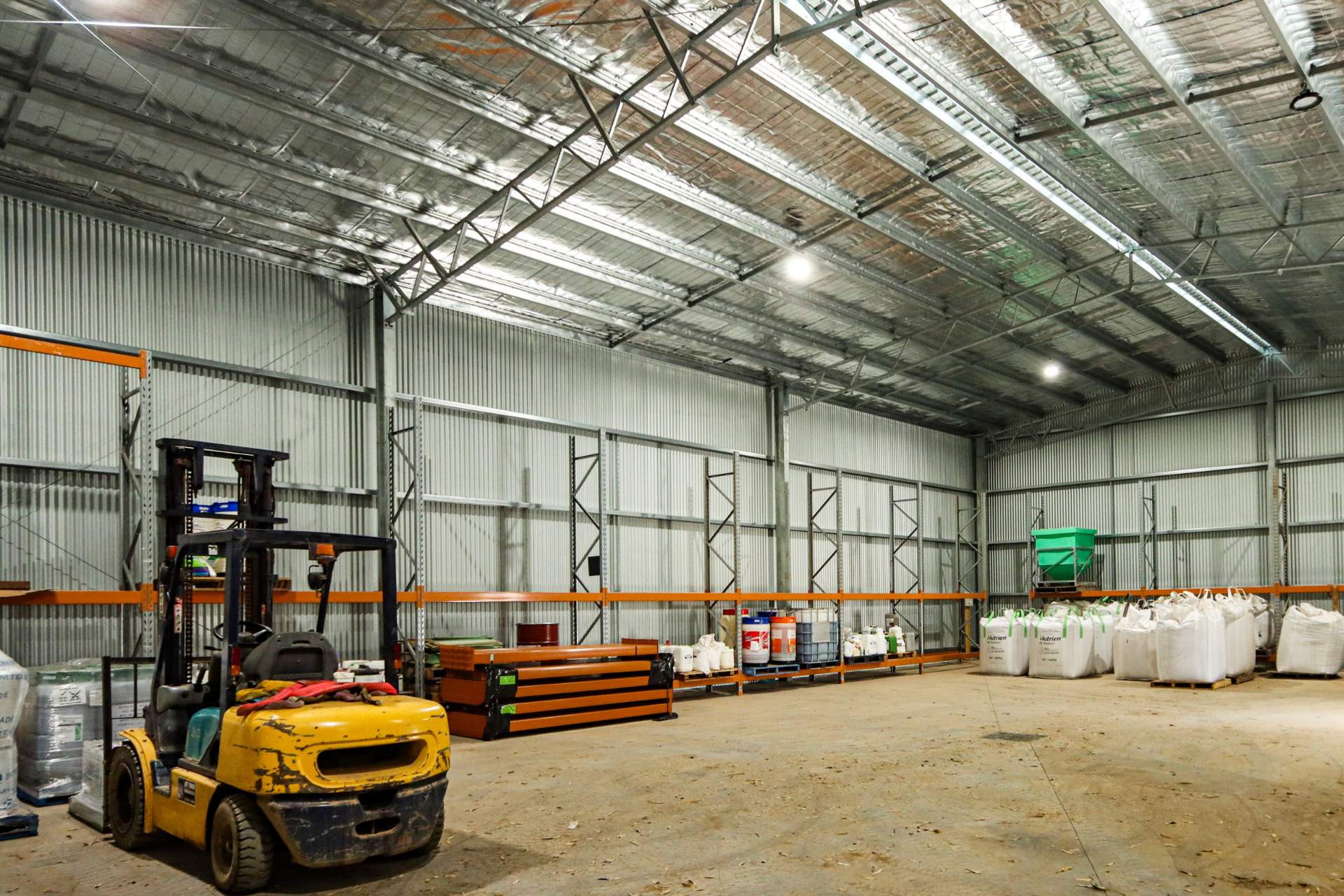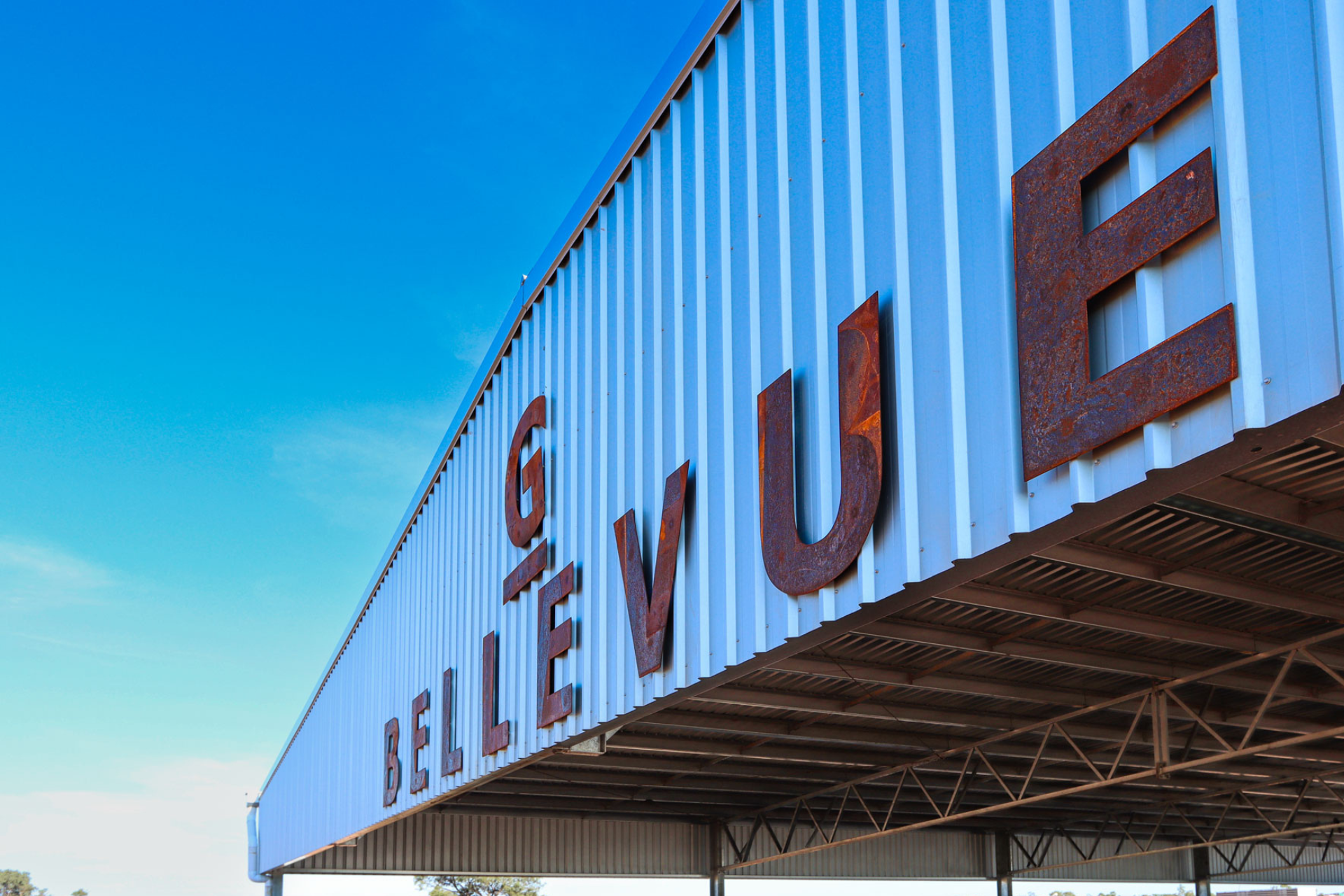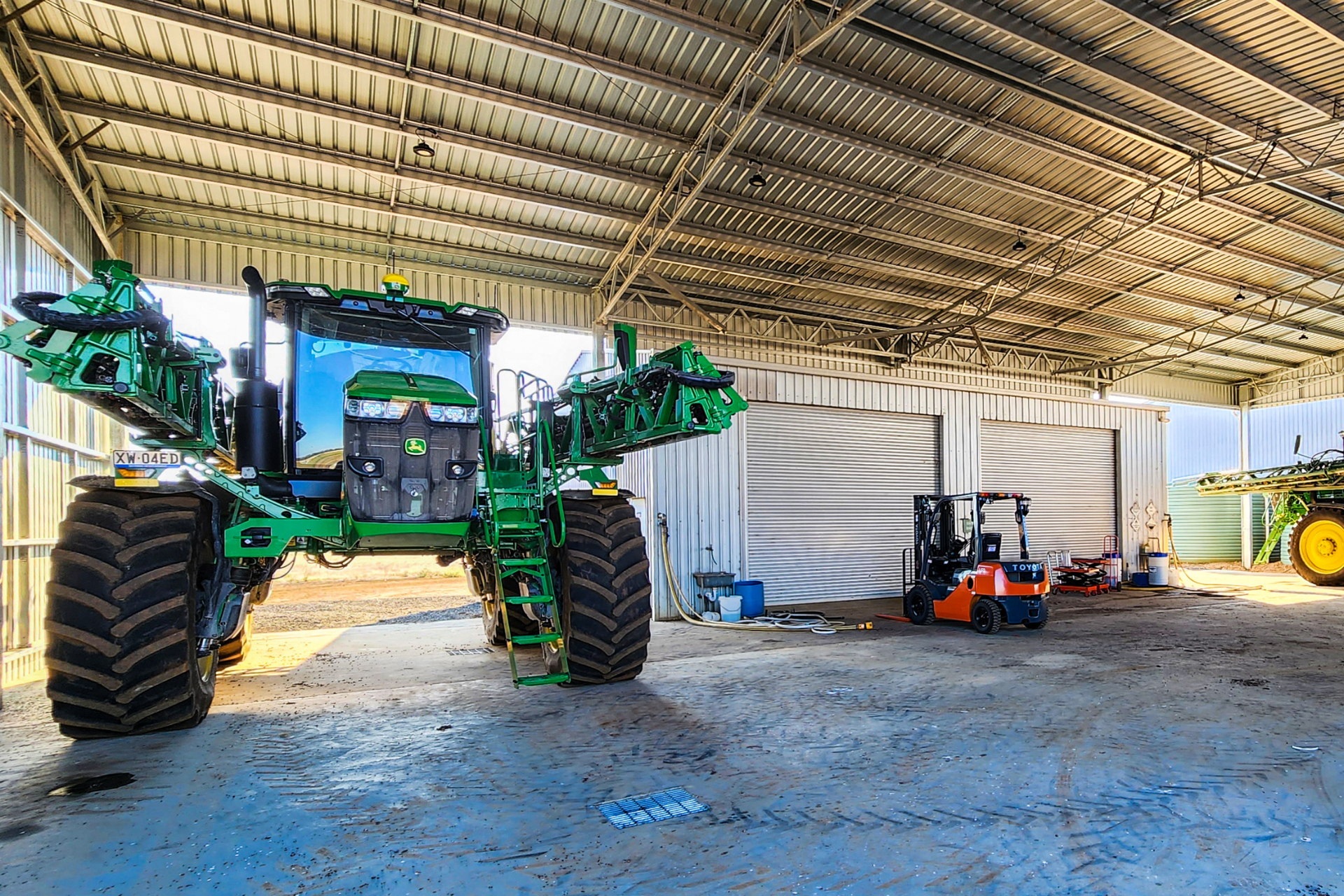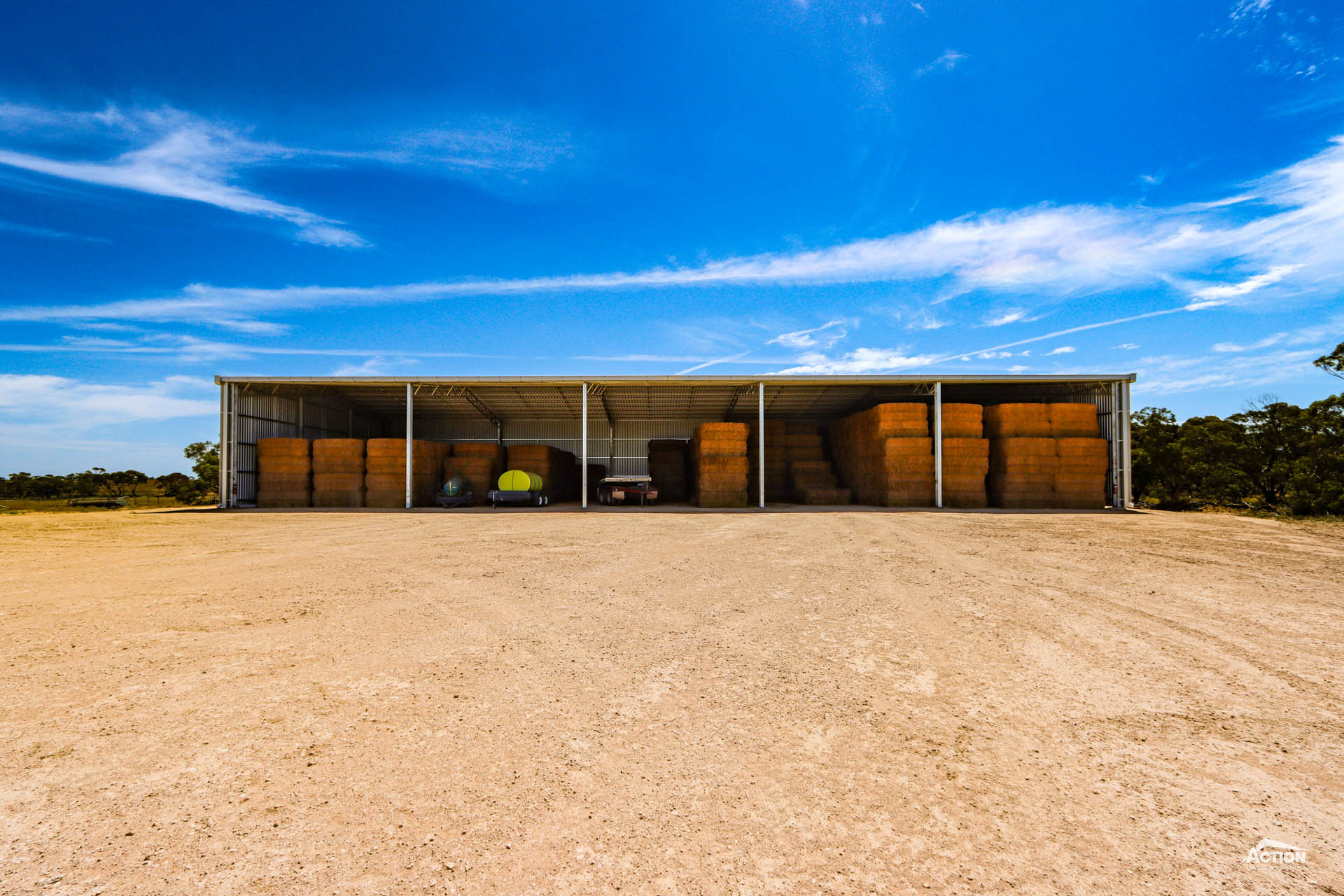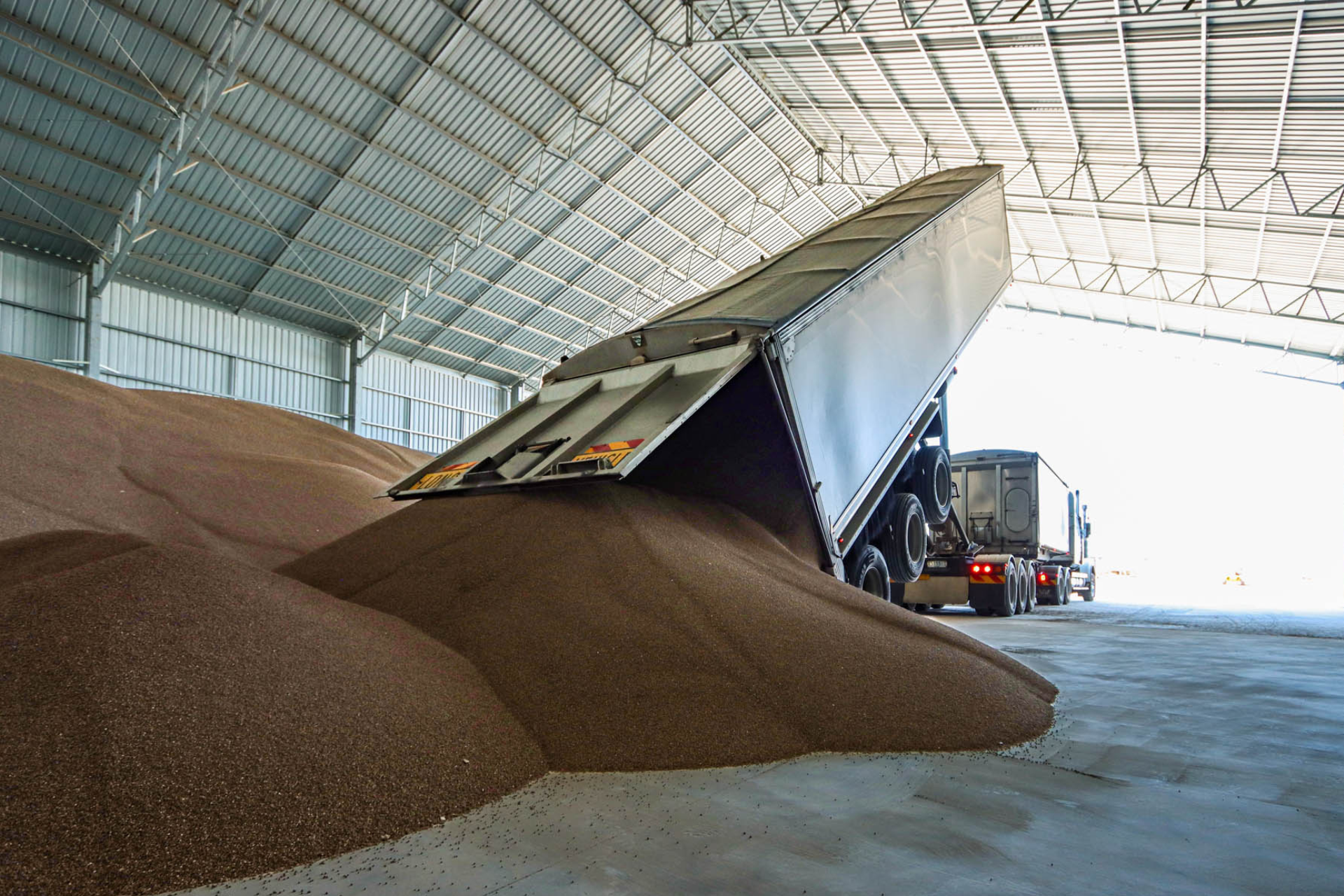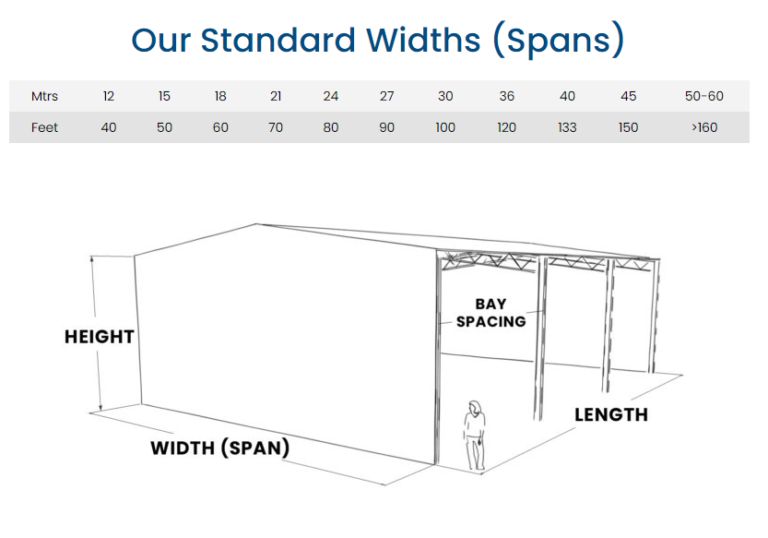Up to date, safe and secure farm chemical storage facilities such as chemical sheds are becoming essential farm infrastructure.
As a result, over the past few years, more and more farmers have been building new chemical sheds.
If you are planning a chemical shed build, it is essential to research and develop a design that is safe, functional and meets requirements.
Researching chemical storage shed designs? Looking for ideas and best-practice suggestions?
In this article, we answer the top ten questions about building a chemical shed.
First up we discuss chemical shed prices.
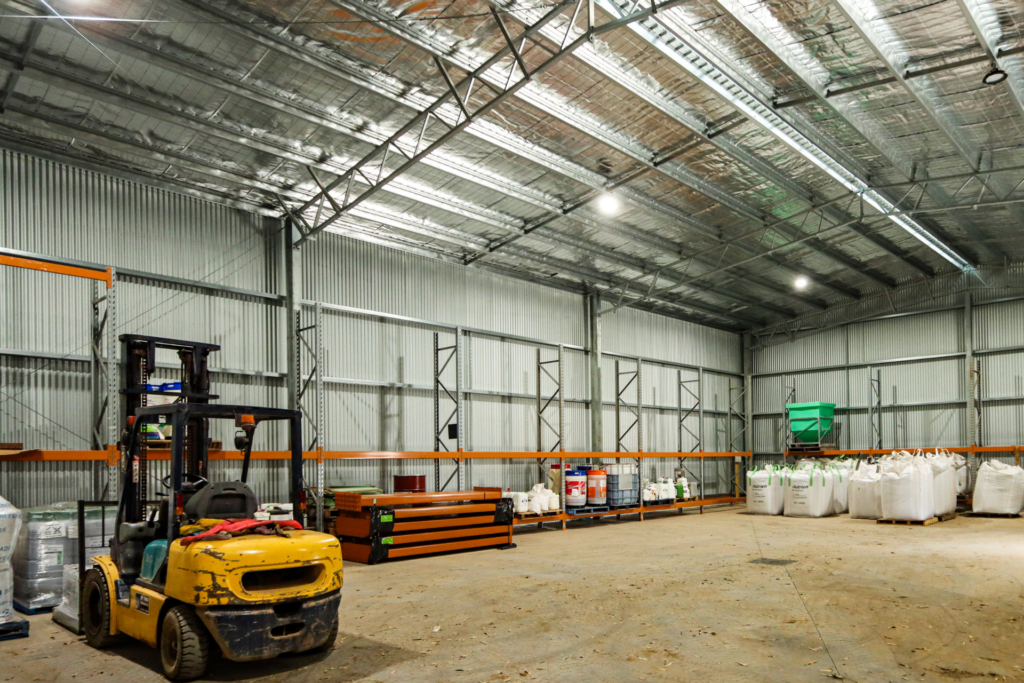
1. How Much Does It Cost To Build a Chemical Shed?
You might be wondering if a standalone chemical shed will be cost-prohibitive.
Or if some designs or configurations are more cost-effective than others.
Budgeting is an important first step for any shed or construction project, so here is a basic price guide for building a chemical shed.
The average cost of a chemical shed is approx. $90,000 including GST, footing concrete and erection.
The price does vary from project to project, so here are some popular sizes and price estimates.
- A 16m x 12m x 6m fully enclosed chemical shed with sliding doors costs approx. $60,000 – $80,000.
- A 24m x 12m x 6m fully enclosed chemical shed with sliding doors costs approx. $75,000 – $95,000.
- A 24m x 15m x 6m fully enclosed chemical shed with sliding doors costs approx. $90,000 – $115,000.
These estimates include GST, erection costs and footing concrete.
There are other ways to design your chemical storage too – which we discuss later. For example, you could consider including a dedicated chemical storage bay and sprayer wash-down area.
The important consideration here is to ensure that storage requirements are met.
You can learn more about how much building a chemical shed costs, here.
2. What Size Chemical Shed Do I Need?
There are a number of factors to consider before deciding on a chemical shed size.
These include the amount of chemicals you need to store and the different types of chemicals you need to store.
Some chemicals will need to be stored separately. It is also important to allow adequate space and airflow between products.
The height of the shed is something that needs to be considered in the design stage as it is difficult to make a shed higher once it has been installed.
Increasing the height of your shed is typically a cost-effective way to increase the size of your shed.
Pallet racking can be used to take advantage of the height of the shed and avoid stacking shuttles and containers on top of each other. Liquid chemicals should not be stored above solid chemicals though.
The most common height for chemical sheds is 6 metres as this also provides adequate clearance for machinery and helps with the ventilation and airflow through the shed.
Other size recommendations include:
- Factor your future storage requirements into the shed design, or ensure the site allows for an extension in the future.
- Ensure that the shed size allows you to have clear access to avoid hazards when carrying chemicals. To ensure a safe exit in the case of fire keep flammable chemicals away from access points.
The shed configuration that you choose for your shed will also influence what the ideal size is.
The most common configuration for a chemical sheds is a standalone fully enclosed shed.
Fully enclosed, lock-up storage areas (with good ventilation) are usually considered to be the best way to store chemicals and are required to meet regulations and for sustainable grain certification.
Popular fully enclosed sizes include:
- 16m x 12m x 6m
- 18m x 12m x 6m
- 24m x 15m x 6m
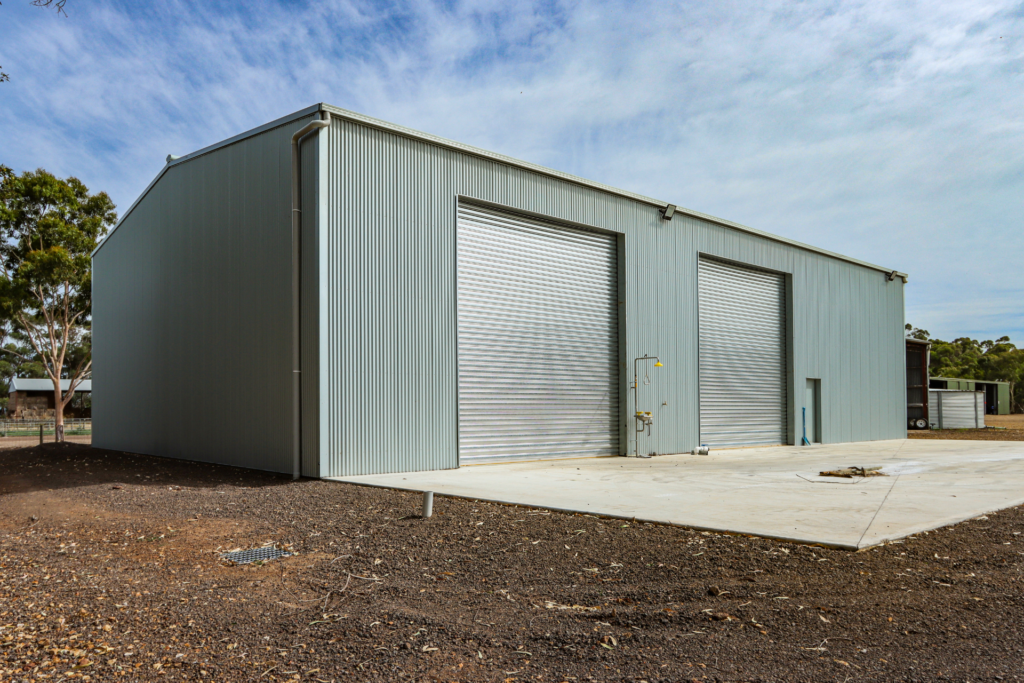
This leads us to the next question – What Is The Best Chemical Shed Design?
3. What Is The Best Chemical Shed Design?
The best chemical shed design is a design that:
- Prioritises safety with ventilation, access, fire prevention and storage hygiene and spill prevention.
- Meets regulations.
- Satisfies the chemical manufacturer’s storage recommendations.
- Suits your operational requirements.
As a result, the ideal shed design can differ from farm to farm and may depend on your state’s storage regulations.
It is widely recognised that the best way to store chemicals is to have a dedicated chemical storage shed, located away from hazards like machinery and hay, and away from waterways, public places and unauthorised personnel.
One of the best chemical shed designs to consider is:
A fully enclosed storage shed with a concrete bunded floor with drainage, sliding doors and personal access doors for access (and for ventilation) and ridge vents or whirly bird vents installed in the roof for airflow and ventilation. Customisation options could include a concrete spray area with a cantilevered canopy for coverage.
Chemical Shed Project Ideas
Browse the gallery below for design ideas for your chemical shed build.
4. What Are The Chemical Storage Requirements and Regulations?
If you store under 1000 kilograms or 1000 litres of chemicals on-farm, this is classified as ‘Minor Storage’ as per the Australian Standard AS2507 – 1998.
Quantities of chemicals greater than 1000 kilograms or 1000 litres are required to comply with the storage requirements of the Dangerous Goods Act 1985 and Dangerous Goods (Storage and Handling Regulations 2012).
The storage requirements and regulations for farm chemicals can vary from state to state, though.
We’ve rounded up state regulations and industry guidelines for your reference:
- Agriculture Victoria On Farm Pesticide Storage (Minor Storage)
- Victorian Farmers Federation Hazardous Chemical Handling & Storage Guide (Download)
- NSW Department Of Industries Storing Pesticides Safely On Farm (Download)
- Work Cover New South Wales Safe Use & Storage Of Chemicals (Download)
- SafeWork SA Chemical Storage Handling & Security
- SA Department of Primary Industries & Regions Storing & Disposal Of Chemicals
You can also learn more in our article, How To Safely Store Chemicals.
5. What Thickness Concrete Slab Does My Shed Need?
Your chemical storage shed will likely be required to have a bunded floor slab that can hold 25% of the total storage volume or 110% – 120% volume of the largest container, whichever is the greatest.
It will also require a drainage point to an evaporation pit outside.
If you are wondering about how thick the concrete slab needs to be, we generally recommend a slab thickness of 150mm (6 inches), with one layer of reinforcing mesh. This is adequate for any farm machinery such as tractors.
Keep reading for a price guide on concrete slabs.
6. How Much Does A Concrete Slab Cost?
Sometimes a concrete slab in a farm shed might seem like a luxury, but in certain sheds, particularly workshops, it is well worth the investment.
In the case of chemical sheds, a concrete slab is a requirement.
As a guide, a 150mm thick slab will cost between $90 – $120m² (in rural areas).
Although a 125mm thick slab may be adequate in many situations, a 150mm is usually best and the extra thickness is not overly expensive.
You can learn more about concrete slabs in this article. Or watch the video below.
7. How Can I Achieve Good Ventilation In A Chemical Shed?
In a chemical shed design, it is important to find the right balance of weather protection and ventilation.
Good ventilation is required to help vapours and fumes evaporate, reduce the risk of fire and make the shed a safe place to work.
There are three main options for achieving adequate ventilation and airflow in a chemical shed. These are wide sliding doors that can opened or closed as necessary, ridge vents and whirlybird vents. Often a combination of these features works best.
8. Will My Chemical Shed Require Council Permits?
As a rule, all farm sheds in Victoria require council permits. There are some exceptions to the rule though. For example, some shires provide a permit exemption for small sheds.
The requirements are also different in other states such as New South Wales and South Australia.
Below are some handy articles on farm shed permits that you might find helpful. Our projects team are also available to organise and manage the permit application process for you, too,
- Will My Shed Require Council Permits?
- What Happens If You Build A Shed Without Permits?
- What Is the Difference Between Building Permits And Planning Permits?
Next up we answer another common question about council permits – How Much Do They Cost?
9. How Much Do Council Permits Cost?
Council permits will likely be an additional cost to your chemical shed project.
So, how much do they cost?
As an indication, the average cost of permits for farm sheds is about $2,600.00, but the price does vary from project to project.
For example, the permits for a large shearing shed usually will cost more than the permits for a 24m x 12m chemical shed.
You learn about the different factors impacting council permit prices, here.
10. What Is The Lead Time?
If you have a deadline in mind for your chemical storage shed project, then you might be wondering about time frames.
The current lead time for a new shed build is currently around four months. You can learn more about this here.
That’s a wrap on questions about building a chemical shed! We hope this article has been helpful!
For more articles and resources, browse our Learning Hub.
Or to discuss your project, give us a call or REQUEST A QUOTE.

